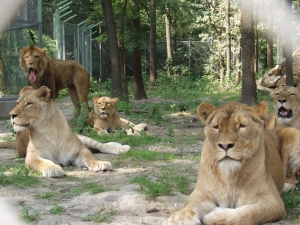Popular destinations nearby
Szeged,
Békéscsaba,
Gyula,
Hódmezővásárhely,
Kecskemét,
Baja,
Bugac,
Kalocsa,
Makó,
Ópusztaszer,
Orosháza,
Akasztó,
Bácsalmás,
Battonya,
Békés
|
Town with 162,300 inhabitants on the banks of the river Tisza, a prominent economic and cultural centre and university town. There is a village called Gyála (in Serbian - Djala) south of Szeged, in the territory of Serbia and Montenegro, on the left bank of the Tisza. This village had a meadow called Gyálarét until the end of the 19th century, which was uninhabited at that time. After the regulation of the Tisza, Gyála was divided into two parts as the bend of the river was straightened. This way the village and its meadow were separated (Dombi, 2002). In 1950 the village was given the name of Gyálarét, which has belonged to Szeged since 1973, so it is not an independent settlement today. The first documented record of the place is in a diploma by King Béla III from 1183. More than 750 years ago, after the Mongol invasion, a stone castle and town status were granted. On 12th March, 1879 the town, then with a population of 70,000, was washed away by the Great Flood of the river Tisza. Of Hungarian and foreign grants Szeged was rebuilt as a modern city in five years. Based on the plans by Lajos Lechner boulevards and avenues gave the structure of the new town. The Szeged Open-air Festival, organized in Dome Square in front of the Votive Church from the 1930s, is still the most outstanding cultural event of the town in July and August. University institutions, Episcopal seat and Theological Academy are housed in the surrounding buildings. The oldest monument of the town is the Dömötör Tower, part of a former, 12th century church, is now used as a baptistry. On the order of the local Catholic Serbs the Serbian church was completed by 1778. The Kárász House was built in neo-classical style in 1845, from its balcony the last speech of Lajos Kossuth in Hungary was delivered on 12th July, 1849. Eminent Hungarians born in Szeged include poet Gyula Juhász and composer Jenő Huszka. From the vast number of sights offered by the town the Móra Ferenc Museum, the Salami and Paprika Museum, the Castle Museum and the Observatory are to be highlighted. From the places of natural interest the Botanical Garden, the Game Park, the nearby Lake Fehér and the Sas-ér shall be mentioned first. Lodgings in Szeged: More lodgings in Szeged Sights in Szeged: More sights in Szeged Pictures of Szeged
|
Szeged map nagyítása >>
|
|
|
Hungary - Szeged |
|
|
|
||
|
Tuesday, 15. April 2025. - 07:21:18 |
||

